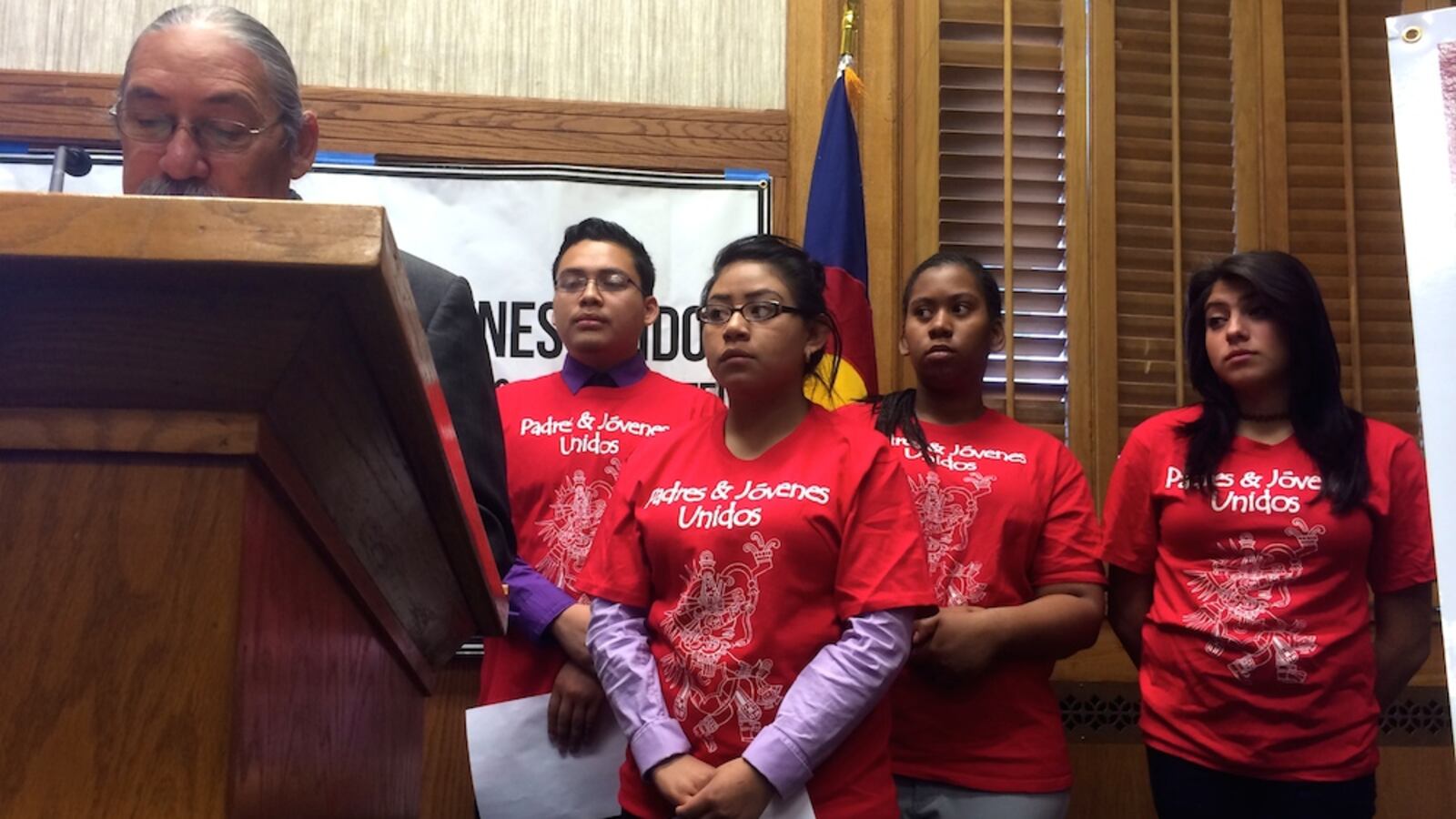Fewer Colorado students were suspended or expelled last year after school districts across the state abandoned zero-tolerance policies.
But schools are increasingly referring students of color to law enforcement officials, according to a statewide report released today by advocacy organization Padres & Jovenes Unidos.
The results of how schools manage discipline infractions in an era sans zero-tolerance policies is a “mixed bag,” said Ricardo Martinez, co-executive director of Padres.
But, he said, “the report shows we’re moving in the right direction.”
Prior to the fall of 2012, students would be automatically suspended or expelled for any number of infractions including vandalizing school property or shoving a classmate. But that changed after the Colorado General Assembly passed the Smart Schools Discipline Law that did away with all but one possible infraction — carrying a firearm onto a campus — that could lead to an automatic expulsion.
The law also provided training for school resource officers, established a data collection partnership between schools and law enforcement agencies, and encouraged districts to implement more peer mediation and restorative justice practices.
State Sen. Linda Newell, D-Littleton, called the legislation and its impact a model for the nation.
“The country has been watching us,” she said. “I’m ecstatic we’re already seeing positive results. But our work is not done. We need to ensure our children walk out with a diploma, not a criminal record.”
Earlier this year, the federal departments of education and justice released guidance to schools across the nation on how to break the so-called “school-to-prison” pipeline. Colorado laws were already in compliance.
However, Daniel Kim, director of youth organizing for Padres & Jovenes Unidos, said there is huge variability on how schools are applying their new policies across the state.
“A student’s educational opportunity still hinges on where they live,” he said.
The report found across Colorado expulsion rates dropped by 25 percent, suspension rates dropped by 10 percent and law enforcement referrals were down by 9 percent.
But law enforcement referrals for black and Native American students increased by 8 percent and 3 percent, respectively.
Kim said his organization would begin to break down the district level data published today and collect anecdotes from students, teachers and parents on what kind of policies are working — and which aren’t.
“We want to know if the culture is really changing,” he said. “Are teachers getting the support they need?”
According to a survey of Denver teachers last year, they aren’t. In fact, they said the new policies that are supposed to keep students in their seats learning are now leading to more distributions and less instructional time for their peers.
Martinez said he hopes schools can provide teachers with the resources they need to turn discipline infractions into teachable moments.
“The end goal is for a safe learning environment for every student,” he said. “There needs to be a really good reason to deprive a student of learning.”


